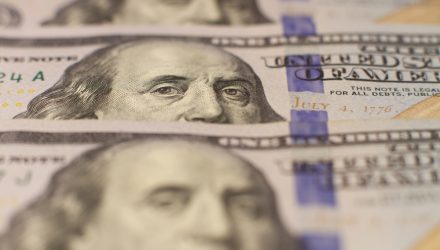Income-minded investors should consider ETF strategies that provide consistent dividend growth at a rate that exceeds inflation.
In the recent webcast, Yield vs Growth: How to Fight Inflation with Dividends, Matthew Page, Portfolio Manager, SmartETFs, warned that economists are projecting a median inflation forecast of 2.9% for 2021, followed by 2.3% for 2022, and 2.1% for 2023, all above the Federal Reserve’s 2% target.
Luckily for investors, yield-hungry investors can turn to dividend strategies to help bridge the gap and maintain a higher real return.
“Divided-paying companies can, over the long term, provide a potential inflation hedge,” Page said. “Dividend income has grown in line with or often at a higher rate than inflation.”
To help investors target quality dividend payers, SmartETFs has come out with the SmartETFs Dividend Builder ETF (NYSE Arca: DIVS), an actively managed dividend growth strategy that seeks dividend-paying companies that have provided an inflation-adjusted cash flow return on investment of at least 10% in each of the last 10 years. The ETF invests in approximately 35 dividend-paying companies globally.
The SmartETFs Dividend Builder ETF seeks a moderate level of current income and consistent dividend growth at a rate that exceeds inflation by targeting quality companies at attractive valuations.
“We aim to build a concentrated portfolio of good quality companies, at attractive valuations, with a moderate dividend yield and good potential for dividend growth,” Page said.
Specifically, SmartETFs focuses on companies with a long history of persistent high return on capital and aims to avoid highly leveraged companies. The strategy identifies companies that are cheap vs. the market, peers, and their own history. The fund investment process is fundamentally driven from the bottom up. Lastly, the strategy typically has 35 equally weighted position and targets a low turnover with an average of 3 to 5 year investment horizon.
The active ETF is not another passive index clone masquerading as an actively managed strategy. When compared to the MSCI World Index, DIVS has an overweight position in consumer staples, industrials, and healthcare. Additionally, the ETF is most heavily underweight U.S. equities. It is overweight the U.K. and Europe.
DIVS has also exhibited improved drawdowns during periods of heightened volatility. Page pointed out that the fund captured only 72% of market downside on average in the 5 corrections seen since fund launched at the end of 2010.
Financial advisors who are interested in learning more about dividend strategies can watch the webcast here on demand

